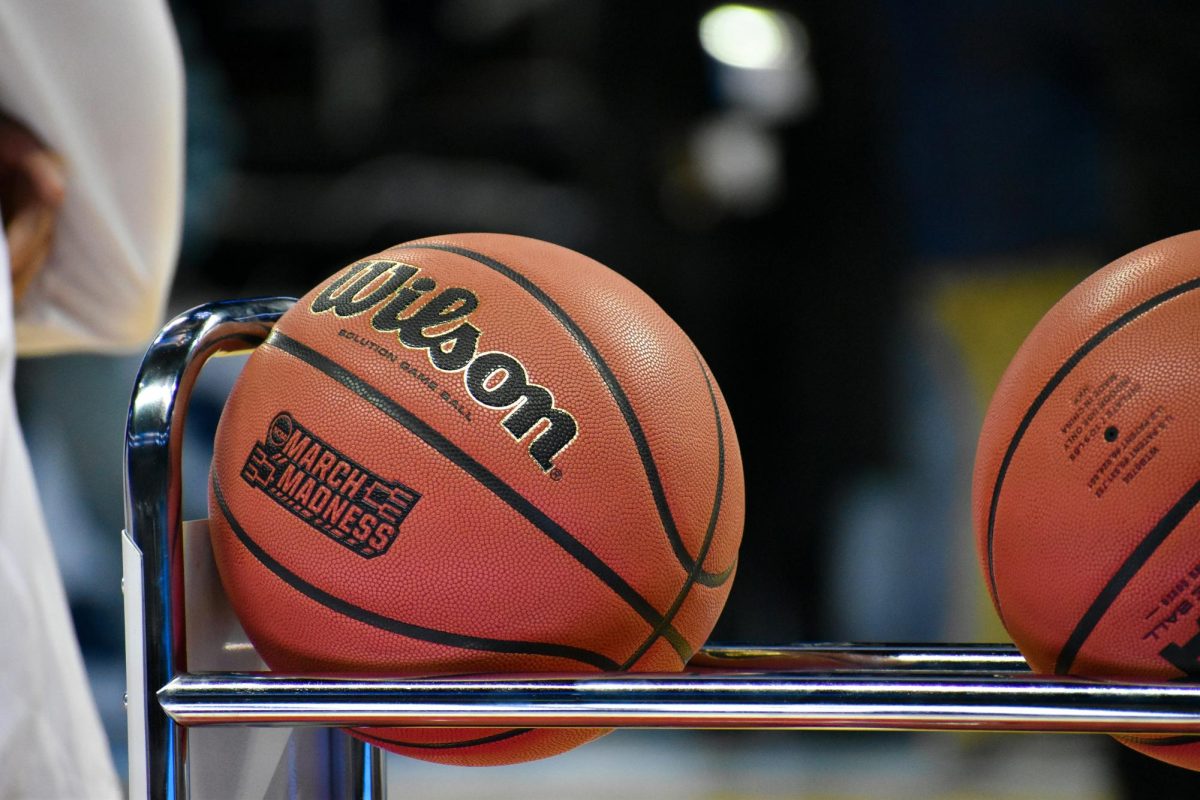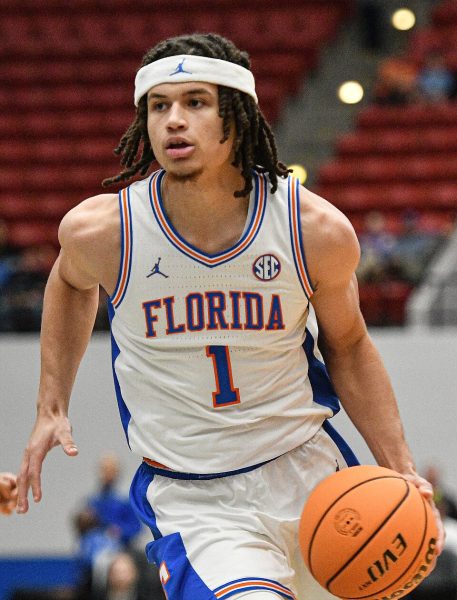
Todd Greene
from @tarheeltodd on unsplash.com
For only the second time since the NCAA men’s basketball tournament expanded to 64 teams in 1985, the 2025 Final Four featured all four number one seeds. Not only that, but the Round of 16 consisted of teams from solely the “Power 4” conferences (Southeastern, Big Ten, Big 12, Atlantic Coast).
This is a big change to college basketball, as March Madness has always been filled with unprecedented upsets and “Cinderella” runs deep into March.
Now, it seems that these lower-seeded, smaller schools winning games in the tournament will be few and far between.
Transfer portal
A huge reason for this change is the NCAA transfer portal, which was created in 2018 in an effort to make the transfer process easier and more transparent. The portal applies to all NCAA divisions, but is most utilized at the Division I level.
At first, students still had to sit out a year after transferring, which had always been the case for NCAA student-athletes. In 2021, they implemented a new rule that players could transfer once without sitting out a year, but if they wanted to transfer again they’d have to sit out. In April 2024, the NCAA announced that players could now be immediately eligible, regardless of how many times they had previously transferred.
Now, with no penalty to transfer, players can compete at a new school every year, and some have been doing so. It has been killing the mid-major and low-major schools, who develop their recruits just for the most talented ones to get scooped up by high level programs after one season.
NIL
The overlying aspect that’s fueling the increase in transfers is the NCAA’s Name, Image, and Likeness (NIL) policy, which became effective on July 1, 2021 following a “June 2021 Supreme Court decision in NCAA v. Alston that challenged the NCAA’s restrictions on student-athlete compensation,” according to Google AI.
It plays a role in all college athletics, but Division I men’s basketball happens to be affected the most.
The question “Should student-athletes get paid?” was heavily debated throughout the sports world for many years. Many argued that the full scholarship some athletes received, which wasn’t available to the vast majority of other students at a school, was their payment. Think about it, anyone on a full athletic scholarship would have little to no student loan debt after they graduated, and that is huge.
The decision became one of the biggest, if not the biggest in the history of collegiate athletics.
Prior to the Supreme Court decision, college athletes received no money from the schools they represented. Regardless of how much money they made for the athletic department of their school, the athletes didn’t benefit from it, not even a penny. Many people did not think that was fair to the student-athletes, but others argued that other college students weren’t getting paid for their work either.
Sure, college athletes should be able to make some money off of their name. But, NIL has quickly evolved from guys trying to make some money from endorsements and jersey sales to schools basically getting into bidding wars for college students. It has become quite ridiculous.
Jameson Stockwell, a senior at New Hartford, put it like this: “It changes the game for many schools, and for a lot [of them], not in a positive way. NIL and the transfer portal have given a huge advantage to schools willing to spend the money; these schools treat [the portal] like a business… For recruiting, [these high-major schools] can essentially ‘buy’ recruits with NIL money. At this point, colleges can essentially start recruiting other college athletes instead of high school kids.”
This should not be the case. In my discussions with Jameson and New Hartford senior Ben North, they both mentioned AJ Dybantsa, the number one high school player in the class of 2025. In December, Dybantsa committed to play at Brigham Young University in Utah. Though they’ve seen some success in recent years, BYU has historically been known as a football school in terms of athletics. Dybantsa was the highest ranked recruit they’ve ever landed.
Why would he choose BYU, when he was receiving scholarship offers from every top basketball program in the nation? BYU offered him a $7 million NIL deal to play there.
“That can put him in retirement just for a couple months of college hoops. This example is why the Power 4 [schools] can just beat out low level [schools] with money and resources,” Jameson said.
Before NIL, players would transfer for many reasons. Some wanted to play at a bigger school since they usually have better basketball programs, which means more winning and more exposure for the athlete. Others would transfer to whatever school would give them the best opportunity for playing time. Now, all of that has seemingly gone out the window.
Improvements
This is at no fault to the student-athletes, who deserve to get paid and should be allowed to transfer, but there needs to be some sort of reform to the system.
Ben believes there should be a cap on how much NIL money a school can give one of their players: “I honestly don’t know how long that’ll take, but it has to happen (or something along those lines), because if it doesn’t then it’ll limit these bigger schools from giving millions of dollars to a single player that other schools can’t afford.”
Social media personality Ryan Hammer (ryanhammer9 on TikTok), who primarily covers college basketball, proposed three potential transfer portal changes:
Move the start date to the Tuesday after the National Championship. Right now, players can enter the portal during the Sweet 16 when there are 40 teams still competing between the NCAA Tournament, College Basketball Crown, and the NIT. Doing this would give every team an equal opportunity to land transfers, not just the ones that aren’t playing.
Players can transfer only once in their four years. Some exceptions: coaching change, medical hardship, graduate student
Limit on NIL spending. Not necessarily every conference has to have the same limit, but make it relative to conference size/revenue.
There was already enough disparity between the high and low-major programs before the transfer portal, but it has reached a whole new level.
“I think at some point college basketball will start to resemble college football, or a “super division” of college basketball. [Eventually], low-major and even some mid-major schools’ funds will not even be close to Power 4 schools, so basketball might become similar to the two subdivisions of Division 1 college football. Although I am not a fan of this and prefer how the system has been before NIL and mass transfers, I think it ultimately will lead to this scenario,” Jameson said.
The future of college hoops
Historically, the national champs have had a group of veteran players who stuck with the program. Now, it seems every top program’s roster is full of transfers.
To put this in perspective, here are all of the transfers from the Florida Gators, who won the 2025 National Championship on April 7.
G) Walter Clayton Jr.- Iona
G) Kevin Pazmino- Santa Fe College
C) Micah Handlogten- Marshall
F) Sam Alexis- Chattanooga
G) Will Richard- Belmont
C) Rueben Chinyelu– Washington State
G) Alijah Martin- FAU
Clayton, Richard, and Martin were the Gators top three leading scorers, and none of them started their careers out at Florida. The crazy thing is, this is actually a relatively low number of transfers compared to many top schools.

Ben and Jameson actually had different opinions regarding the future of Cinderella teams in March Madness. With low level schools struggling to keep their top talent, it looks like it’ll be more difficult for lower seeds to win in March.
“I think it is really hard not to believe [Cinderella runs won’t be common]. Cinderellas often happen because of a really strong core group of players who are what many call the ‘ideal’ team beating many more young talented ‘one and done’ players who maybe aren’t as strong together. With NIL, the trend seems to be to play well as a young athlete at a smaller school, then transfer and earn some cash in Power 4 play. A low level team led by talented freshmen before they leave is very unlikely. The only Cinderella scenario is a group of really talented juniors and seniors who somehow all decide to stay at a school for 3 or 4 years together. Even with this, it will be hard for these players not to get pulled away with the flow of cash coming their way. So in the end, I think it would be near impossible for this to happen [in the near future],” Jameson said.
“I don’t think that Cinderella runs are over yet. I think that there will always be good mid-majors that are slept on and have players that were under-recruited out of high school and end up becoming really good college players. I think that this year is an outlier when it comes to only Power 4 teams making the Sweet 16. I believe that Cinderella runs are definitely going to continue because it’s the nature of March Madness: there are always going to be upsets. Once you get to the tournament, all of the teams are good– obviously some are a lot better than others– but you’ll still find mid-majors that are really good,” Ben said.
I understand it’s hard to say that history won’t repeat itself, but the nature of today’s game is making it seem unlikely. A school from a smaller conference would have to get very lucky with their transfers and recruits to have a chance at winning some games in March.
The new state of college basketball is a bit disappointing, as March Madness may no longer be as unpredictable as it was in the past. A record 14 SEC schools earned bids to the tournament this March, and I don’t think it’ll stop there.
The best 20-25 schools in the country may be playing higher quality basketball, but at what cost? Power 4 schools will continue to dominate the tournament and upsets will still be scarce unless action is taken.
The NCAA needs to do something, or college basketball is going to look more and more like a professional sport– and more importantly– less enjoyable for fans to watch.